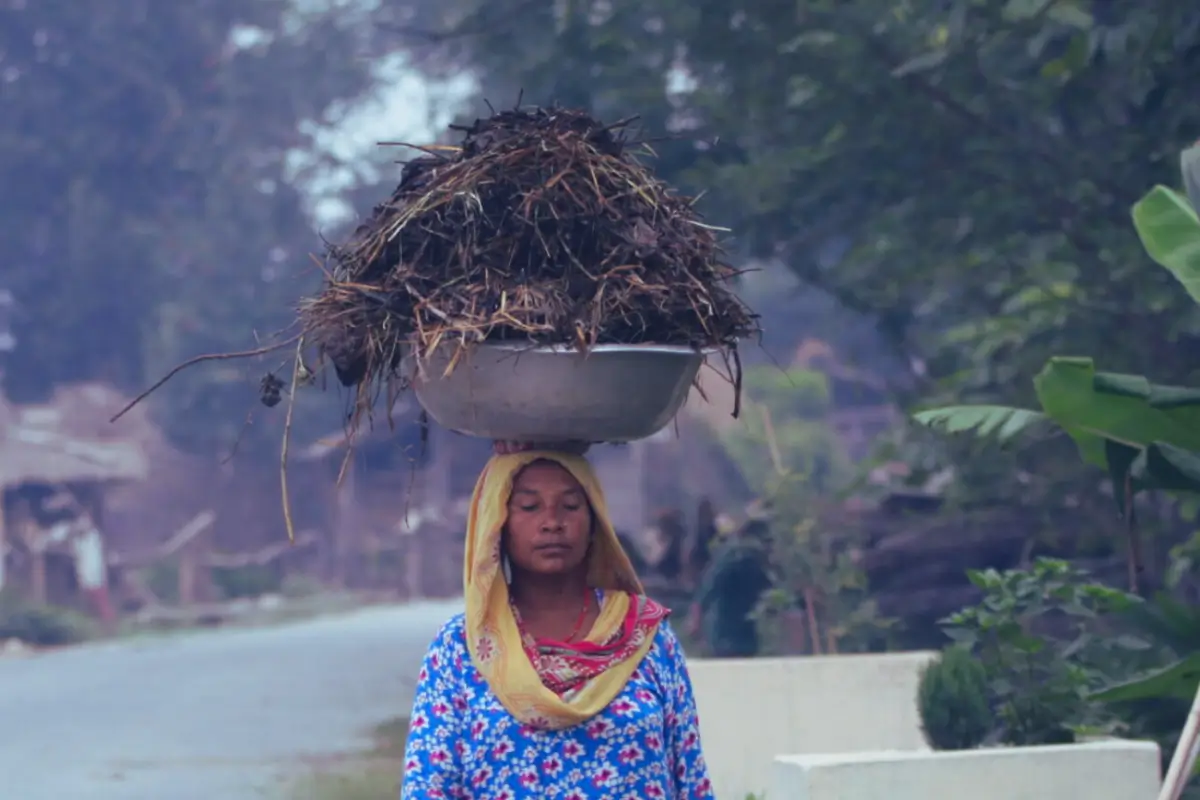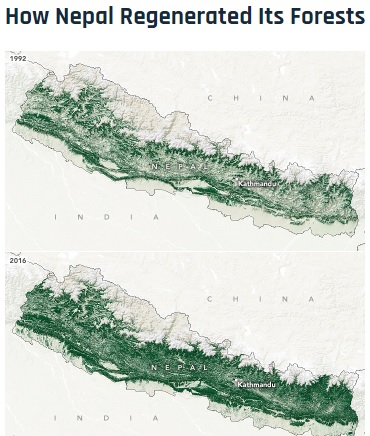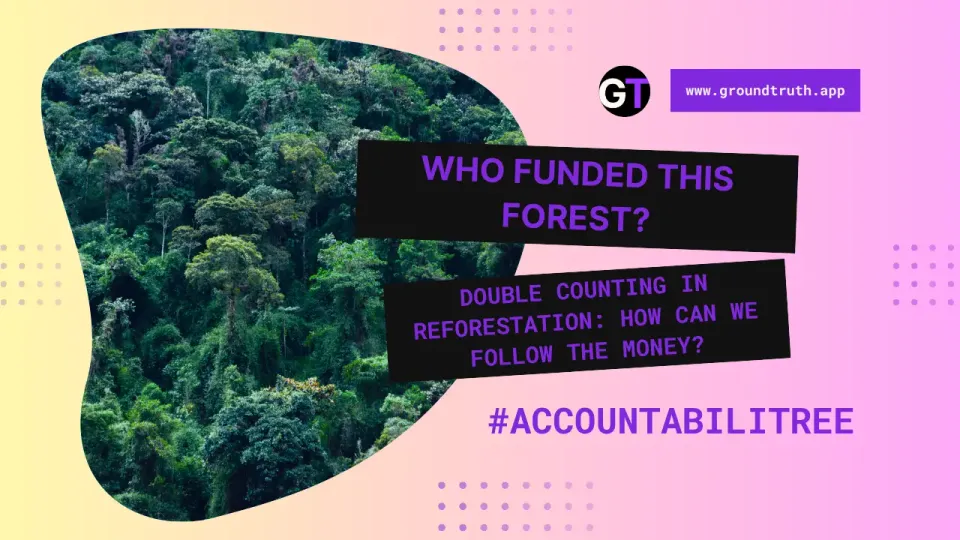Will Nepal Receive World Bank Carbon Funds?
Nepal's forest communities may face challenges accessing $45M in World Bank carbon funds due to bureaucratic hurdles.

This article by Abhaya Raj Joshi originally appeared in Mongabay.
- Stakeholders warn that Nepal’s first results-based carbon funding of up to $45 million from the World Bank’s Forest Carbon Partnership Facility (FCPF) may be subjected to complex bureaucratic processes and lack of coordination among multiple government bodies.
- Only 72% of the funds are expected to reach the beneficiaries after administrative deductions, with further uncertainty about how much will directly benefit local forest-protecting communities, given potential operational costs and unclear disbursement mechanisms.
- Communities also face challenges in accessing the funds, such as the requirement to present proposals, navigate government procurement laws, and compete with private contractors.
- Nepal’s Forest Development Fund, responsible for disbursing payments, has been criticized for operational inefficiency, holding unspent reserves due to the lack of finalized guidelines.
KATHMANDU — Nepal is set to receive $45 million under a World Bank program rewarding it for protecting its forests, but the communities on the frontlines of that effort could miss out, stakeholders say.
That could potentially turn this inaugural payment from the Forest Carbon Partnership Facility (FCPF) into an expensive experiment with minimal benefits for local communities, they warn.
“At the heart of the issue is the involvement of too many government institutions such as the Ministry of Finance, the Forest Development Fund, the Ministry of Forest and Environment, the provincial governments, and potentially the divisional forest offices,” said lawyer Dilraj Khanal, who specializes in natural resources.
Because the money doesn’t go directly from the World Bank’s FCPF to the communities involved in forest protection, it risks being bogged down and slashed at every stage of the different government ministries and departments it has to pass through.
The initial payment of $45 million is part of the total $1.3 billion global fund for the 2.4 million tons of carbon stored in the forests of the 13 districts that make up the Terai Arc landscape, the lowland area of Nepal that’s home to the iconic Bengal tiger (Panthera tigris). That sum equates to the avoided emissions from protecting forests between 2018 and 2024, calculated at a rate of $5 per metric ton of carbon dioxide equivalent under the REDD+ program to save forests, restore biodiversity, and promote sustainable economic growth.
For Nepal to get paid, it has to show proof that it’s actually reducing emissions. This proof comes in the form of an evaluation called the Measurement, Reporting, and Verification (MRV) report. Nepal has already submitted this report, which is currently being verified by a third party, according to David Sislen, World Bank regional country director for the Maldives, Nepal and Sri Lanka.

In an email to Mongabay on Dec. 18, Sislen said that once the verification is complete, the funds will be channeled through the Forest Development Fund (FDF), Nepal’s designated receiving entity for forest carbon trade, as outlined in the project’s legal agreement.
But Khanal said the fact that the money has to go through the FDF “itself complicates the process.”
Mongabay recently reported that the Department of Forests and Soil Conservation has 6.4 billion rupees ($47 million) in its accounts set aside for the FDF, which has an extensive mandate ranging from running afforestation programs to facilitating research and addressing human-wildlife conflict. The 5-year-old fund has failed to spend a single rupee, due to lack of operational guidelines, which are still being drawn up. Different versions of the document are being circulated among stakeholders for feedback.
But the project’s benefit-sharing plan, seen by Mongabay, offers some clues about the process. According to the plan, seen by Mongabay, the World Bank’s FCPF will deposit payments into the country’s federal treasury. The Ministry of Finance will then transfer the money to the FDF as per its expenditure plan for the relevant fiscal year. The FDF will then transfer the money to the accounts of the identified beneficiaries, including government agencies such as national parks, community-based forest management groups, private forest owners, and even forest-dependent communities not belonging to any forest group.

“At the surface level, the fund disbursement plan sounds smooth. But it’s anything but as it requires a lot of coordination between different agencies — a task Nepal’s bureaucrats haven’t been traditionally good at,” Khanal said.
First, he said, there’s confusion as to how much of the fund will reach the beneficiaries. According to the plan, the finance ministry will take off 20% for “administrative costs.” The FDF will shave off 10% of what it gets, also in administrative fees. This means that only 72% of the funds will be available to the beneficiaries.
The Forest Regulation, the project’s benefit-sharing plan, and a version of the Forest Development Fund operational guidelines seen by Mongabay suggest the national REDD+ agencies and the provincial forest offices are likely to play a crucial role in the selection and implementation of programs. It remains unclear whether these entities will also take a certain percentage of the fund to cover operational costs.
“When we carried out some rough estimates, we came up with numbers that were really insignificant at the community level to carry out meaningful conservation and restoration work,” said forest expert Subash Chandra Devkota.
In addition to this, the beneficiaries need to come up with programs that meet the objectives of the fund and present proposals to the relevant officials to access the fund. This creates obstacles for communities that don’t have the capacity to prepare such documents, a forest ministry official told Mongabay, requesting anonymity as they weren’t authorized to talk to the media.
Similarly, as the fund is to be spent in accordance with the government’s fiscal expenditure plan, programs would have to be conducted in compliance with procurement laws. “The general norm is that programs included in the fiscal plan need to be carried out through a bidding process,” said Birkha Bahadur Shahi, senior vice chair of the Federation of Community Forestry Users, Nepal. This means that local forest officials could hire private companies for work such as afforestation and restoration just because they submit lower bids compared to community groups, he added.
To mitigate that challenge, the government must prioritize local user groups over private companies when it comes to awarding contracts, said Dhaniram Sharma, head of the finance ministry’s International Economic Cooperation Coordination Division.
But as doing so would be at the discretion of the relevant provincial forest department, some communities that aren’t in the forest office’s good books may stand to lose out, the ministry official told Mongabay.
When Mongabay specifically asked the World Bank’s Nepal office by email about potential measures to ensure the money reaches the local people involved in saving the forests, along with other questions about the program, it didn’t answer.
With all these challenges, the communities that played crucial roles in protecting the forests since 2018 could potentially miss out on the benefits of the carbon trade agreement, Khanal said. “If that happens, all this would prove to be an expensive learning experiment with little impact,” he said.
License
Joshi, Abhaya Raj. Nepal’s forest-protecting communities may miss out on World Bank carbon funds. Mongabay. December 23, 2024. Republished under a Creative Commons Attribution-NoDerivatives 4.0 International License




